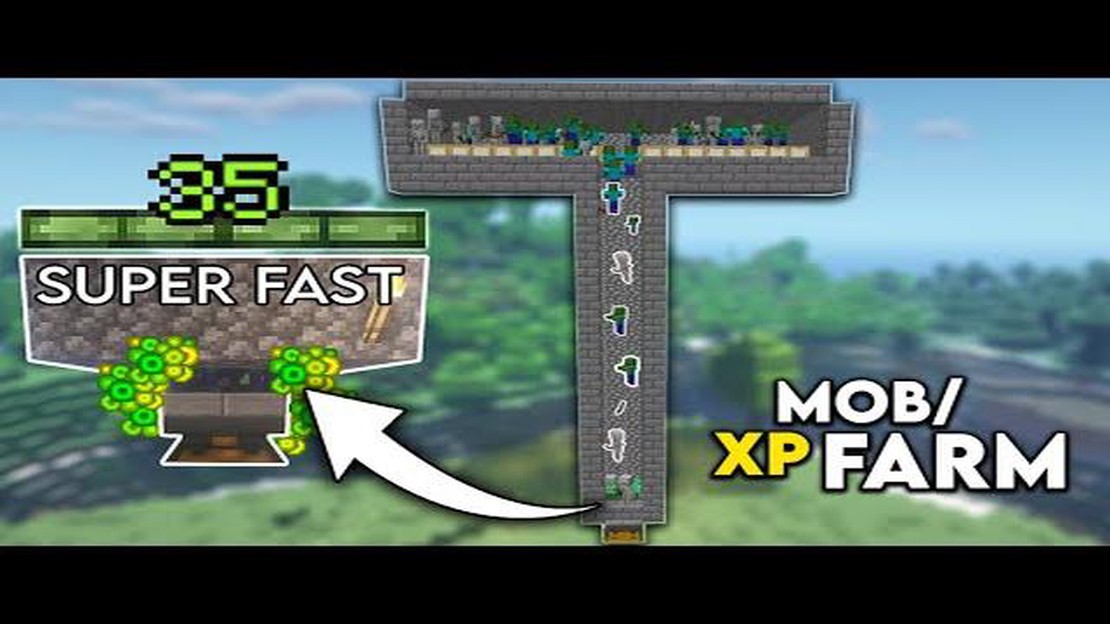How Many People Play Roblox? Discover the Game's Massive User Base
How Many People Play Roblox? Roblox is a popular online gaming platform that attracts millions of players from around the world. The game was released …
Read Article
Welcome to the ultimate guide on how to make a mob farm in Minecraft! In this step-by-step tutorial, we will walk you through the process of creating a highly efficient mob farm that will allow you to collect tons of valuable resources and experience points. Whether you’re a seasoned Minecraft player or just starting out, this guide will help you maximize your mob farming potential.
In Minecraft, mobs are creatures that spawn in different biomes and can drop valuable items such as bones, string, gunpowder, and rare enchantment books. Mob farms are structures designed to attract and kill mobs in order to collect their drops. They are an essential part of any survival world, providing a steady supply of resources for crafting and trading.
This guide will cover everything you need to know about mob farms, from the basic principles to advanced techniques. You’ll learn how to choose the right location for your farm, how to design efficient spawning platforms, and how to optimize the farm for maximum output. We will also provide tips and tricks to deal with different types of mobs and challenges you may encounter along the way.
So, grab your pickaxe and let’s get started on building the ultimate mob farm in Minecraft! Whether you’re looking to stock up on resources or simply want to challenge yourself with a complex building project, this guide will provide you with all the information you need to succeed. Get ready to become a mob-farming expert and take your Minecraft experience to the next level!
Building a mob farm in Minecraft can be a great way to collect resources such as experience points, rare drops, and materials. A mob farm is a structure that is designed to spawn and kill mobs automatically, allowing you to gather their drops without having to manually hunt them down.
Here are the basic steps to build a mob farm:
Building a mob farm can be a fun and rewarding project in Minecraft. By following these basic steps and experimenting with different designs, you can create an efficient mob farm that will provide you with a steady stream of valuable resources.
Read Also: Ultimate Guide: How To Level Up Troops In Clash Of Clans
Before you start building a mob farm in Minecraft, you will need to gather some resources. Here is a list of the items you should collect:
Make sure you have all these resources gathered before you move on to the next step of building your mob farm in Minecraft. Planning ahead and having all the necessary materials will make the construction process smoother and more efficient.
Before you start building your mob farm, it’s important to choose a suitable location. The location you choose will greatly affect the efficiency and productivity of your farm. Here are a few things to consider:
Once you have found a suitable location, mark it with blocks or torches so that you remember where to build your farm. With a proper location, you are ready to move on to the next steps of building your mob farm.
Before you start building your mob farm, it’s important to have a clear plan and design. This will ensure that your farm is efficient and effective in gathering drops from mobs.
Here are some key factors to consider when designing your mob farm:
Read Also: When Does Coin Master Tahm Kench Come Out? - Release Date and More
It’s important to carefully design your mob farm layout and structure to maximize efficiency and yields. Take into account the resources you have available and the specific goals you have for your farm. With a well-designed layout, you’ll be able to create a highly productive mob farming system in Minecraft.
A mob farm in Minecraft is a structure or contraption built in the game to automatically spawn and kill mobs (hostile creatures) in order to collect their drops, such as experience points, items, or resources.
Building a mob farm in Minecraft has several benefits. It allows players to easily collect valuable drops from mobs, such as gunpowder, bones, string, and rare items. It also provides a steady source of experience points for enchanting items and levelling up.
The materials needed to build a mob farm in Minecraft vary depending on the design and complexity of the farm. Generally, you will need building blocks, such as cobblestone or wood, and additional materials like redstone, water buckets, signs, and trapdoors. You may also need rails, minecarts, or hoppers for automated item collection.
Yes, you can build a mob farm in any biome in Minecraft. However, the effectiveness and efficiency of the mob farm may vary depending on the biome. Some biomes, like plains or deserts, may have more open spaces and less obstruction for mob spawning, making them ideal locations for mob farms.
How Many People Play Roblox? Roblox is a popular online gaming platform that attracts millions of players from around the world. The game was released …
Read ArticleHow Can I Get Legendary Cards In Clash Royale? Legendary cards are some of the most coveted and powerful cards in Clash Royale. With unique abilities …
Read ArticleHow Many Pokemon Does Ash Have? Ash Ketchum is the beloved protagonist of the long-running anime series Pokemon. Throughout his adventures, Ash has …
Read ArticleHow To Build A Good Clash Royale Deck? Clash Royale is a popular mobile strategy game that combines elements of collectible card games and tower …
Read ArticleHow To Get Pets Genshin Impact? Genshin Impact, the popular action role-playing game developed by miHoYo, has captured the hearts of players all …
Read ArticleWhat you need to know about Dracthyr in World of Warcraft Dracthyr is an intriguing new addition to the World of Warcraft universe. This mysterious …
Read Article